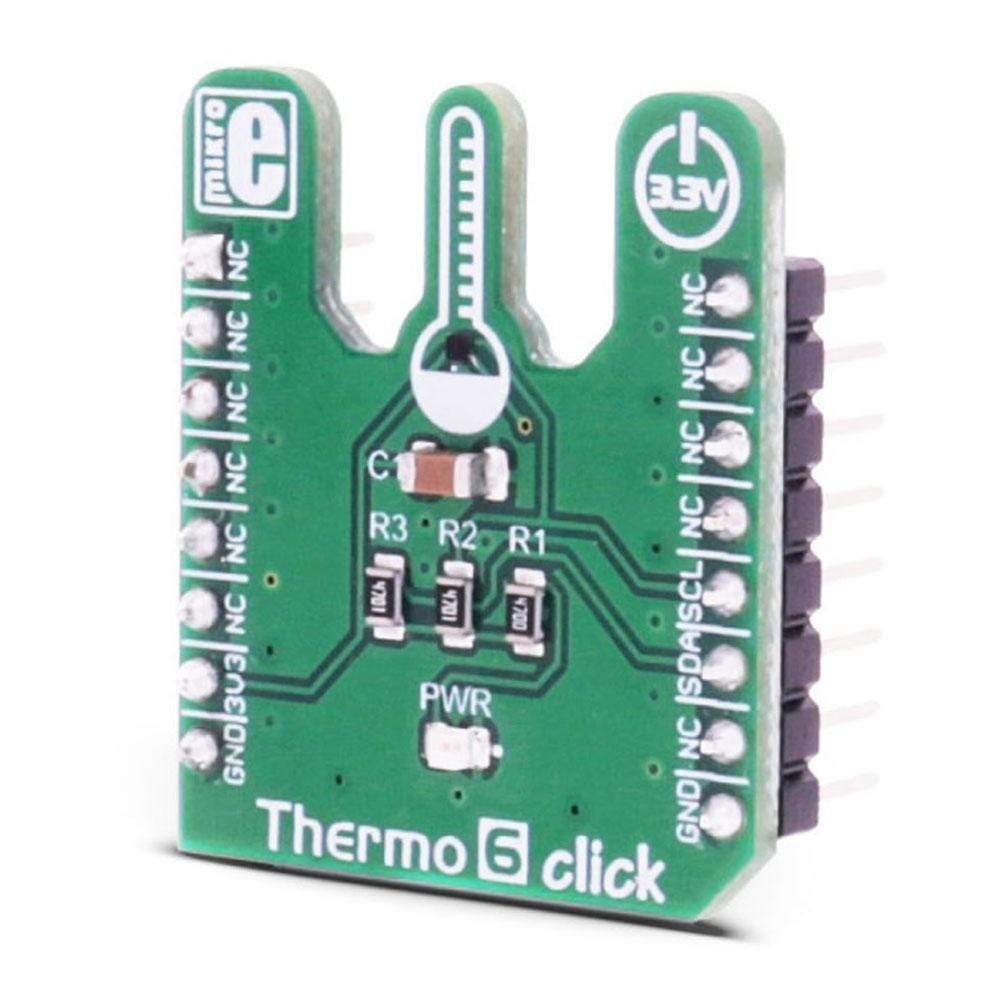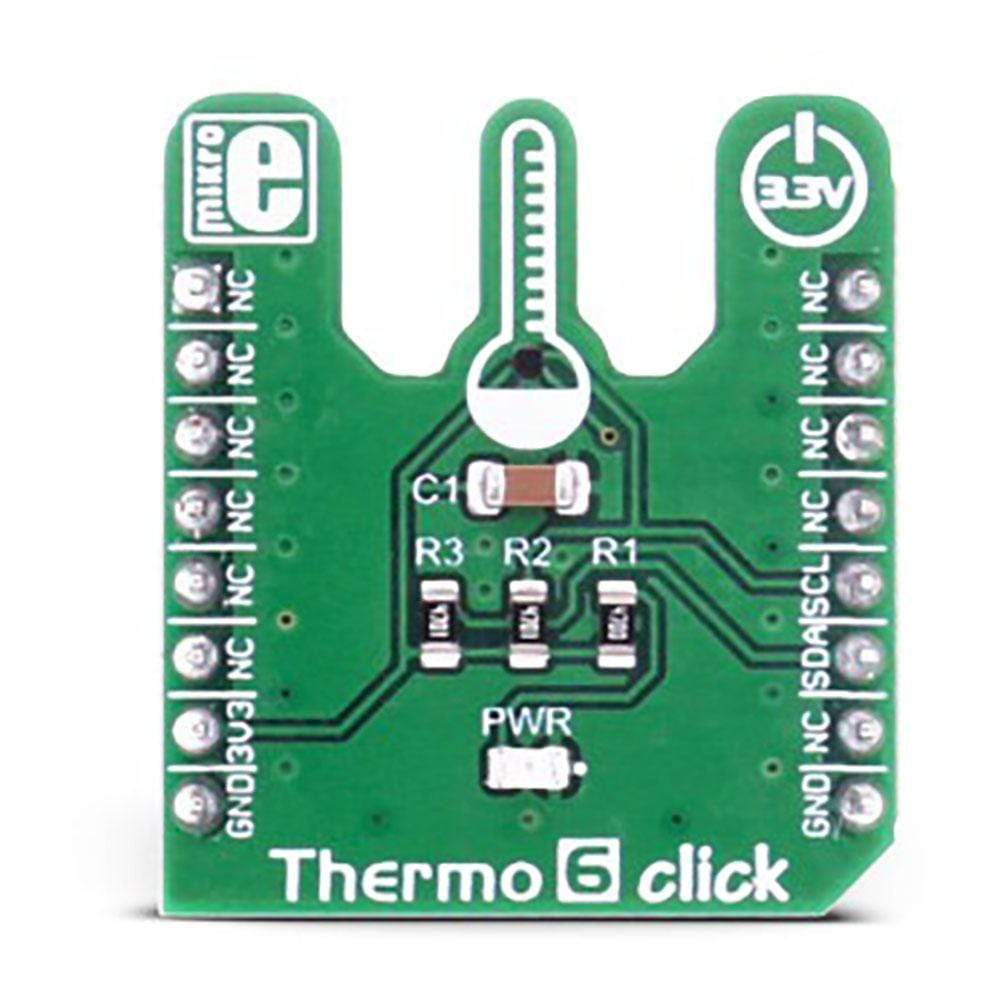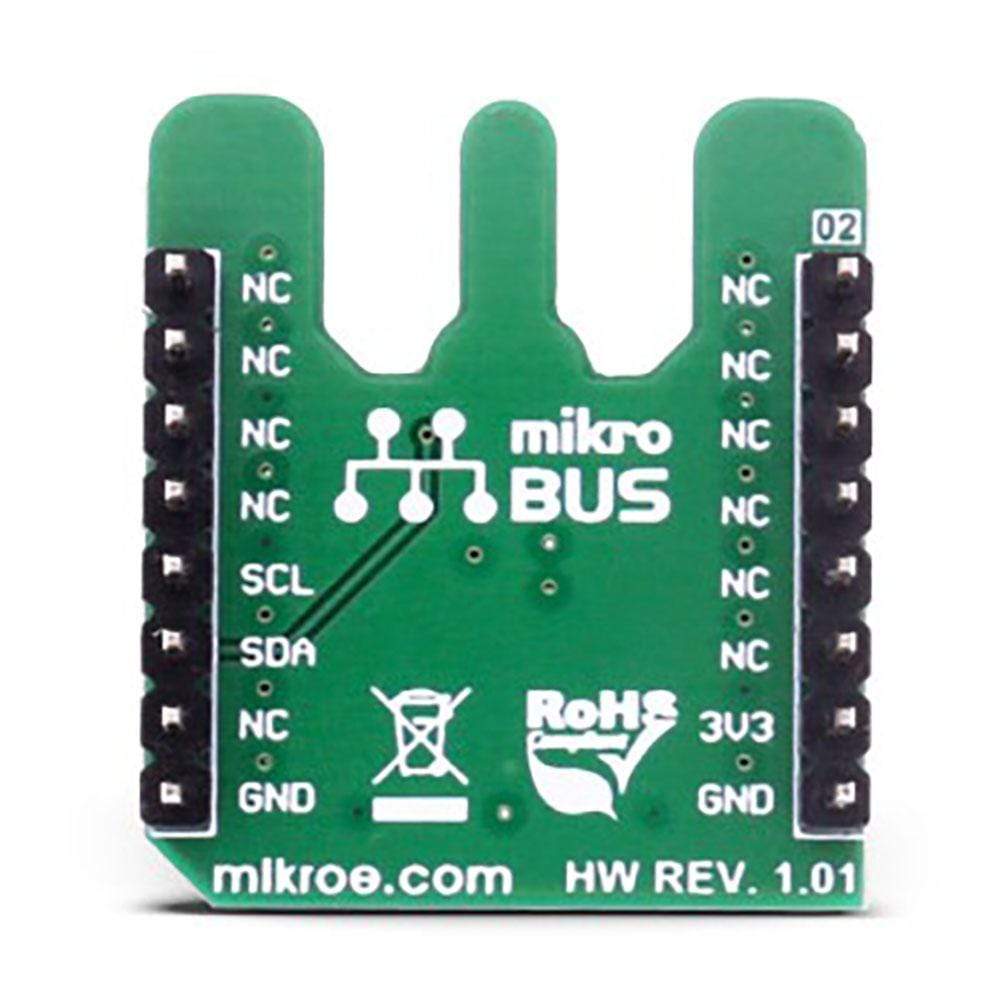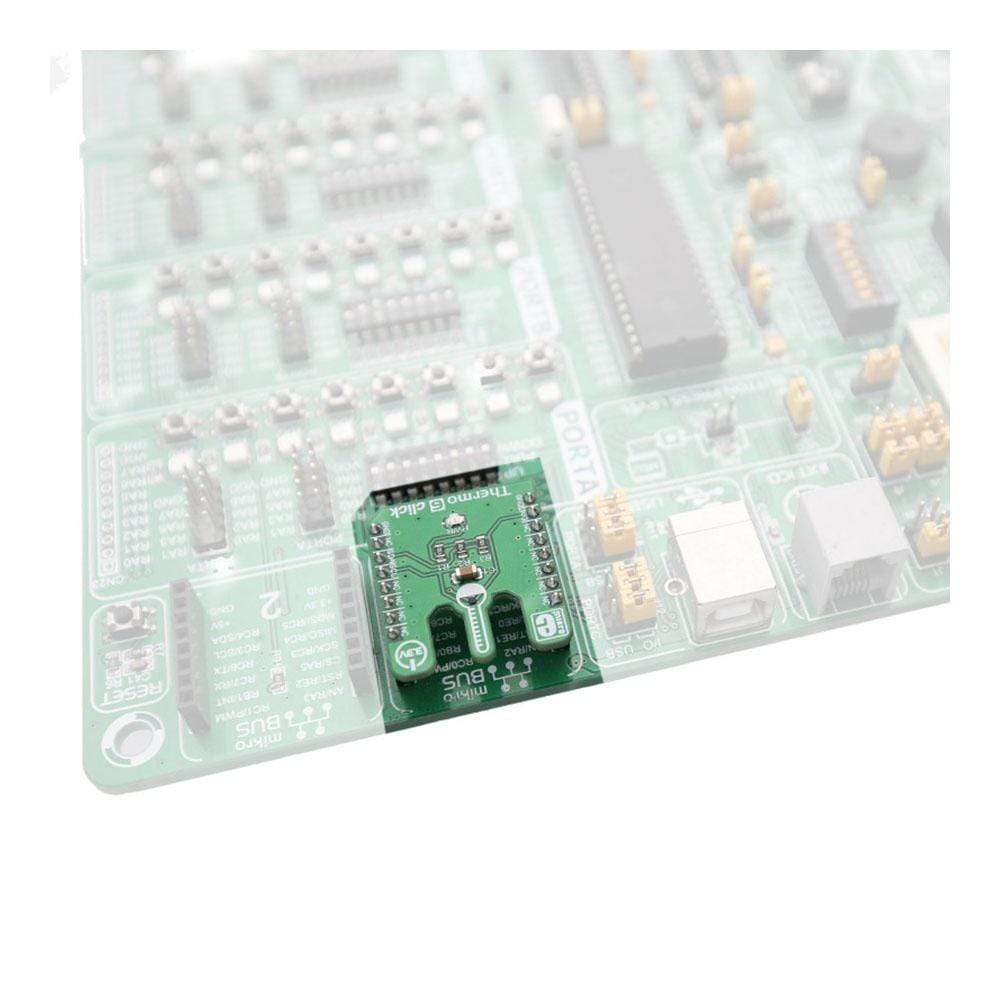



Overview
The Thermo 6 Click Board™ is a precise and versatile ambient temperature measurement Click Board™, based on the Maxim Integrated MAX31875 temperature sensor.
This sensor has a great combination of features, such as a wide range of temperature measurements, excellent measuring accuracy, and small die size, coupled with the very low power consumption - attributes that make this sensor a great choice for many different applications.
Downloads
Le Thermo 6 Click Board™ est un Click Board™ de mesure de température ambiante précis et polyvalent, basé sur le capteur de température Maxim Integrated MAX31875.
Ce capteur présente une excellente combinaison de fonctionnalités, telles qu'une large gamme de mesures de température, une excellente précision de mesure et une petite taille de matrice, associées à une très faible consommation d'énergie - des attributs qui font de ce capteur un excellent choix pour de nombreuses applications différentes.
| General Information | |
|---|---|
Part Number (SKU) |
MIKROE-2769
|
Manufacturer |
|
| Physical and Mechanical | |
Weight |
0.017 kg
|
| Other | |
Country of Origin |
|
HS Code Customs Tariff code
|
|
EAN |
8606018711567
|
Warranty |
|
Frequently Asked Questions
Have a Question?
Be the first to ask a question about this.




